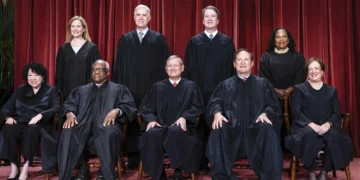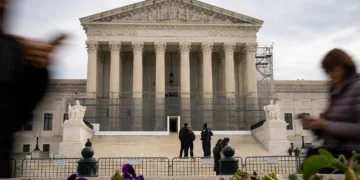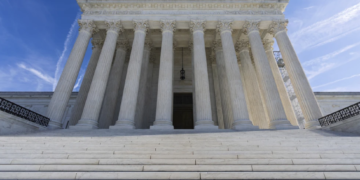March 21, 2025 Story by: Editor
The U.S. Supreme Court is set to hear arguments on March 24 in the case of Louisiana v. Callais, a pivotal lawsuit that could determine whether Louisiana’s newly drawn congressional map aligns with Section 2 of the Voting Rights Act of 1965, which prohibits racial discrimination in voting.
The outcome of this case could have far-reaching consequences, as non-Black voters challenge the legitimacy of the state’s second majority-Black congressional district.
“Really at the base level, this case is an example of plaintiffs trying to strip Black voters of a hard-fought victory and a congressional map that provides them with an equal voice,” said Sara Rohani, Assistant Counsel with the NAACP Legal Defense Fund.
The Push for Fair Representation
According to the 2020 U.S. Census, Louisiana’s Black population has grown while its white population has declined. In response, civil rights advocates and community members urged lawmakers to adopt a congressional map that accurately reflects the state’s demographic shifts.
“Louisiana has six congressional districts. So, Black voters, Black legislators thought it was only fair that two or a third of the congressional districts are majority Black as well,” explained Piper Hutchinson of the Louisiana Illuminator.
In 2022, state lawmakers approved a new congressional map, but it was later rejected for failing to ensure fair representation for Black voters. After multiple legal battles, the legislature ultimately passed a revised version in 2024 that included a second majority-Black district, complying with Section 2 of the Voting Rights Act.
“This is in a bit of a unique situation now because you have both Black voters and Republican state officials defending this map, and now it is up to the Supreme Court to make a decision,” Hutchinson added.
Rohani echoed this sentiment, stating, “We feel that this satisfies that requirement under the Voting Rights Act and actually provides Black Louisianians the opportunity to elect candidates of their choice at the congressional level in Louisiana.”
Legal Challenges and Supreme Court Review
Shortly after the new map was enacted, a group of non-Black voters, led by Phillip Callais, challenged it in court, arguing that race was the primary factor in drawing the district.
“Their claim was that race predominated in the drawing of this new district,” Rohani explained. “We quickly intervened on behalf of those same plaintiffs we had represented in the Robinson litigation to defend the legislature’s map, which satisfied Section 2 of the Voting Rights Act.”
In May 2024, the Supreme Court issued an emergency stay, allowing Louisiana to use the contested map in the November 2024 elections. As a result, Congressman Cleo Fields (D) was elected to represent the newly drawn Congressional District 6.
“It’s important to remember that racial gerrymandering is illegal, but partisan gerrymandering is not,” Hutchinson noted. “So, a big part of the state’s case in this redistricting case is that their objectives were political.”
Now, the Supreme Court must determine whether the map stands or if it constitutes racial gerrymandering.
“It will be a clear rejection of baseless attempts to invalidate VRA-compliant districts, and it’s an opportunity for the court to reaffirm its precedent and ensure that the voices of Black voters, not only in Louisiana but really across the country, are not diluted and reaffirm this country’s promise of a fair and democratic system,” Rohani stated. The court’s ruling could set a significant precedent for future redistricting battles nationwide.
Source: KALB 5
















